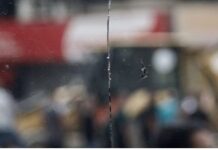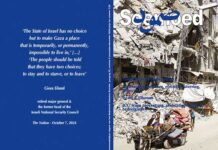The Palestine Chronicle / September 3, 2024
The Media Bias Gaza 2023-24 report, published by the CfMM in March, exposed “significant biases in media coverage” in the UK concerning Palestine and Israel.
A media analyst at the Centre for Media Monitoring (CfMM), Faisal Hanif, has said that British mainstream media’s selective use of language is “a major problematic area” and reveals the biases news outlets hold, the Anadolu news agency reported.
“The way October 7 is described with emotive and alarming terms such as ‘brutal,’ ‘barbaric’ and ‘slaughter’ is in stark contrast with the murder of over 40,000 Gazans, which is sometimes little more than a footnote in mentions or described as ‘unfortunate,’” Hanif told Anadolu.
The Media Bias Gaza 2023-24 report, published by the CfMM in March, exposed “significant biases in media coverage” in the UK concerning Palestine and Israel, as it showed that British media described Israelis as victims of attacks 11 times more than Palestinians, Anadolu said.
Last month, newborn twins were killed in an Israeli airstrike on the family’s apartment in Deir al-Balah, central Gaza.
However, some mainstream media outlets, preferred not to mention “Israeli attacks” in the headlines of their posts on social media, triggering a harsh backlash from many users, asking “Killed by who?”
‘Misleading’ information
Hanif pointed out that the coverage of Israel’s onslaught on Gaza “has several noticeable features.”
“There have been instances of misleading and factually incorrect information being published throughout the last 10 months,” he told Anadolu.
The media analyst noted that some commentators still refer to the claim that the Palestinian Resistance movement Hamas “beheaded babies,” which has been debunked as a fabrication.
Hanif highlighted that when Israeli Prime Minister Benjamin Netanyahu referred to this in his speech before the US Congress in July, the BBC reported this verbatim, without adding the necessary context for readers that this was not in fact true and had been found by investigative journalists to be a fabrication, said Anadolu.
Russia – Ukraine
He said “the omission of information” is also a noticeable feature when it comes to Gaza coverage by the British mainstream media, adding that headlines are an example of this, especially when Israel is the party that is attacking or doing the killing.
“Often, we have seen this is not mentioned, whereas in the case with Ukraine and Russia, the Russians are clearly identified as the party which is doing the killing,” he added, criticizing not only the media but also wider parties, including politicians who defend Ukraine against Russian attacks while failing to take a similar stance when it comes to Gaza.
“Many readers have noticed this double standard from some of the most reputable publishers and news outlets,” said Hanif.
Ongoing genocide
Flouting a UN Security Council resolution demanding an immediate ceasefire, Israel has faced international condemnation amid its continued brutal offensive on Gaza.
Currently on trial before the International Court of Justice for genocide against Palestinians, Israel has been waging a devastating war on Gaza since October 7.
According to Gaza’s Ministry of Health, 40,786 Palestinians have been killed, and 94,224 wounded. Moreover, at least 11,000 people are unaccounted for, presumed dead under the rubble of their homes throughout the Strip.
Palestinian and international organizations say that the majority of those killed and wounded are women and children.
Israel says that 1,200 soldiers and civilians were killed during the Al-Aqsa Flood Operation on October 7. Israeli media published reports suggesting that many Israelis were killed on that day by ‘friendly fire’.
The Israeli war has resulted in an acute famine, mostly in northern Gaza, resulting in the death of many Palestinians, mostly children.
The Israeli aggression has also resulted in the forceful displacement of nearly two million people from all over the Gaza Strip, with the vast majority of the displaced forced into the densely crowded southern city of Rafah near the border with Egypt – in what has become Palestine’s largest mass exodus since the 1948 Nakba.
Later in the war, hundreds of thousands of Palestinians began moving from the south to central Gaza in a constant search for safety.












